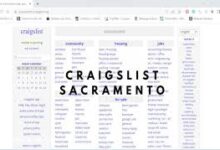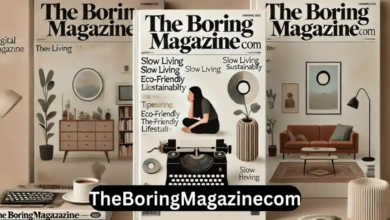The Comprehensive Guide to clipart:ee-zgj_h1oc= brain: Uses, Sources, and Design Tips

In the world of clipart:ee-zgj_h1oc= brain digital communication, visuals play a crucial role in enhancing messages and making content more engaging. One popular visual element is clipart, which can be especially effective when depicting complex concepts like the brain. This guide delves into the use of brain clipart, exploring its significance, sources, and tips for effective design. Whether you’re creating educational materials, presentations, or marketing content, understanding how to leverage brain clipart can elevate your visual communication strategy.
- Understanding Brain Clipart: Definition and Importance
1.1 What is Brain Clipart?

clipart:ee-zgj_h1oc= brain refers to graphic illustrations or images of the brain used in various digital and print media. These images can range from simple line drawings to detailed 3D renderings. The purpose of brain clipart is to visually represent concepts related to neuroscience, psychology, education, and more. It’s a versatile tool that can help convey complex ideas in an easily understandable and visually appealing manner.
clipart:ee-zgj_h1oc= brain is a subset of digital art that includes pre-made images used to illustrate ideas without the need for custom design work. Brain clipart specifically focuses on the brain, which is a symbol of cognition, intelligence, and neurological function. Such images are commonly used in educational materials, scientific presentations, healthcare marketing, and content aimed at raising awareness about mental health.
1.2 The Role of Brain Clipart in Communication
Using clipart:ee-zgj_h1oc= brain can significantly enhance communication by making abstract concepts more tangible. For instance, in educational settings, a diagrammatic representation of the brain can help students visualize different brain regions and their functions. In marketing and healthcare, brain clipart can be used to emphasize mental health initiatives or the cognitive benefits of a product.
The visual representation of the clipart:ee-zgj_h1oc= brain helps in breaking down complex information into digestible parts. For example, a clipart image showing various parts of the brain can simplify the explanation of how different brain functions are interrelated. This approach not only aids in understanding but also makes the content more engaging and memorable.
1.3 Benefits of Using Brain Clipart
The use of clipart:ee-zgj_h1oc= brain offers several benefits. First, it enhances visual appeal, making documents, presentations, and websites more engaging. Second, it aids in educational purposes by providing clear and effective visual aids for explaining intricate concepts. Third, it helps in branding and marketing by symbolizing innovation, intelligence, and mental prowess, which can be particularly useful in fields related to cognitive science, psychology, and healthcare.
clipart:ee-zgj_h1oc= brain also provides a universal language that can cross-cultural and language barriers. Since the brain is a recognizable symbol associated with thought and learning, using brain clipart can effectively communicate ideas to a diverse audience. This makes it an invaluable tool for educators, marketers, and communicators aiming to reach a broad spectrum of people.
- Sources for Brain Clipart: Where to Find High-Quality Images
2.1 Free Clipart Websites
For those on a budget, numerous websites offer free brain clipart images that can be downloaded and used in various projects. Websites like OpenClipart, Pixabay, and Unsplash provide high-quality, royalty-free images that are available for personal and commercial use. These platforms offer a range of brain illustrations, from simple icons to more detailed representations.
When using free clipart, it’s important to check the licensing agreements to ensure that you’re complying with usage restrictions. Some free clipart images may require attribution or have limitations on commercial use, so always review the terms associated with each image before incorporating it into your work.
2.2 Paid Clipart Libraries
For a wider selection and higher quality, paid clipart:ee-zgj_h1oc= brain libraries offer premium brain clipart images. Websites such as Shutterstock, Adobe Stock, and iStock provide extensive collections of brain illustrations that can be licensed for various uses. These platforms often have advanced search features that allow users to find specific styles or types of brain clipart, whether you’re looking for 3D models, diagrams, or abstract representations.
Paid clipart:ee-zgj_h1oc= brain libraries generally offer more professional and diverse options compared to free sources. The images are often created by skilled designers and come with clear licensing terms, which can be beneficial for commercial projects where quality and legal clarity are crucial.
2.3 Custom Brain Clipart Creation
If you need a unique brain clipart image tailored to your specific needs, consider creating a custom clipart. Tools like Adobe Illustrator, Canva, and Inkscape allow users to design their brain illustrations from scratch. Custom clipart:ee-zgj_h1oc= brain can be particularly useful if you have specific branding requirements or if you want to create a visual style that aligns perfectly with your project.
Creating custom brain clipart:ee-zgj_h1oc= brain involves a bit of graphic design knowledge, but many online tutorials and design courses can help you get started. If design isn’t your strong suit, hiring a professional graphic designer can ensure that you get a high-quality, custom-designed brain clipart image that meets your exact specifications.
- Designing Effective Brain Clipart: Tips and Best Practices
3.1 Choosing the Right Style
The style of clipart:ee-zgj_h1oc= brain you choose should align with the overall tone and purpose of your project. For educational materials, detailed and labeled diagrams are often appropriate, while more abstract or stylized images might be suitable for marketing materials or creative content. Consider the context in which the clipart will be used and select a style that enhances rather than detracts from your message.
For instance, a sleek, modern design might be perfect for a tech company’s marketing campaign, while a detailed anatomical diagram could be ideal for a medical textbook. The key is to ensure that the clipart complements the content and communicates the intended message effectively.
3.2 Ensuring Clarity and Simplicity
When designing or choosing a brain clipart:ee-zgj_h1oc= brain, clarity and simplicity are essential. Avoid overly complex designs that might confuse viewers or detract from the main message. The clipart should depict the brain or its components in a way that’s easily recognizable and understandable.
Simple designs with clean lines and minimal distractions often work best, especially in educational contexts where the goal is to convey specific information. Ensure that any labels or annotations are legible and that the overall design does not overwhelm the viewer.
3.3 Integrating Clipart with Other Visual Elements
Effective use of clipart:ee-zgj_h1oc= brain often involves integrating it with other visual elements such as text, charts, or infographics. Ensure that the clipart complements these elements rather than competing with them for attention. Use consistent colors, fonts, and styles to create a cohesive visual presentation.
For example, if you’re creating a presentation slide, position the brain clipart strategically to enhance key points or illustrate data. Ensure that there is sufficient contrast between the clipart and any accompanying text or graphics to maintain readability and visual harmony.
- Applications of Brain Clipart: Where and How to Use It
4.1 Educational Materials
clipart:ee-zgj_h1oc= brain is extensively used in educational materials to illustrate concepts related to neuroscience, psychology, and general brain function. In textbooks, online courses, and educational presentations, brain diagrams can help students visualize and understand complex concepts. Diagrams showing different parts of the brain and their functions can be particularly useful for students learning about anatomy or cognitive processes.
Interactive educational tools and e-learning platforms also benefit from brain clipart. Interactive diagrams or animated brain images can make learning more engaging and dynamic, providing a more immersive experience for students.
4.2 Healthcare and Medical Content
In healthcare and medical content, clipart:ee-zgj_h1oc= brain is used to highlight topics related to mental health, neurological conditions, and cognitive health. Medical brochures, patient information sheets, and health-related articles often incorporate brain images to explain conditions like stroke, Alzheimer’s disease, or depression.
In marketing materials for healthcare products or services, clipart:ee-zgj_h1oc= brain can help convey the benefits of cognitive-enhancing products or therapies. It can also be used in awareness campaigns to draw attention to important health issues and encourage preventive measures.
4.3 Marketing and Branding
clipart:ee-zgj_h1oc= brain can play a significant role in marketing and branding, particularly for companies and organizations in the tech, education, and health sectors. It can symbolize innovation, intelligence, and problem-solving, making it a valuable visual element for branding materials, advertisements, and promotional content.
In logos and branding, brain clipart can help create a strong visual identity that resonates with audiences. For tech startups, educational institutions, or healthcare providers, incorporating brain imagery can emphasize their focus on intelligence, learning, and cognitive development.
- Trends in Brain Clipart: Modern Approaches and Innovations
5.1 The Rise of Minimalist Designs
Minimalist designs have become increasingly popular in recent years, and Minimalist designs have become increasingly popular in recent years, and is no exception. Simple, clean lines and abstract representations of the brain are gaining traction due to their versatility and modern aesthetic. Minimalist brain clipart can easily integrate into various design contexts without overwhelming other elements.
is no exception. Simple, clean lines and abstract representations of the brain are gaining traction due to their versatility and modern aesthetic. Minimalist brain clipart can easily integrate into various design contexts without overwhelming other elements.
This trend toward minimalism aligns with broader design movements that favor simplicity and clarity. In digital and print media, minimalist brain clipart can provide a contemporary look while effectively communicating key concepts.
5.2 Interactive and Animated Clipart
With the rise of digital media, interactive and animated brain clipart is becoming more prevalent. Animated brain images can be used in online presentations, educational videos, and interactive web content to engage viewers and illustrate dynamic processes.
Interactive brain diagrams allow users to explore different brain regions and functions by clicking or hovering over various parts. This approach enhances user engagement and provides a more immersive learning experience.
5.3 Integration with Augmented Reality (AR)
Augmented reality (AR) is an emerging trend that is starting to influence how brain clipart is used. AR technology allows users to interact with 3D models of the brain in real-world environments through their smartphones or AR glasses. This innovative approach provides a hands-on learning experience and can be particularly useful in educational and medical contexts.




